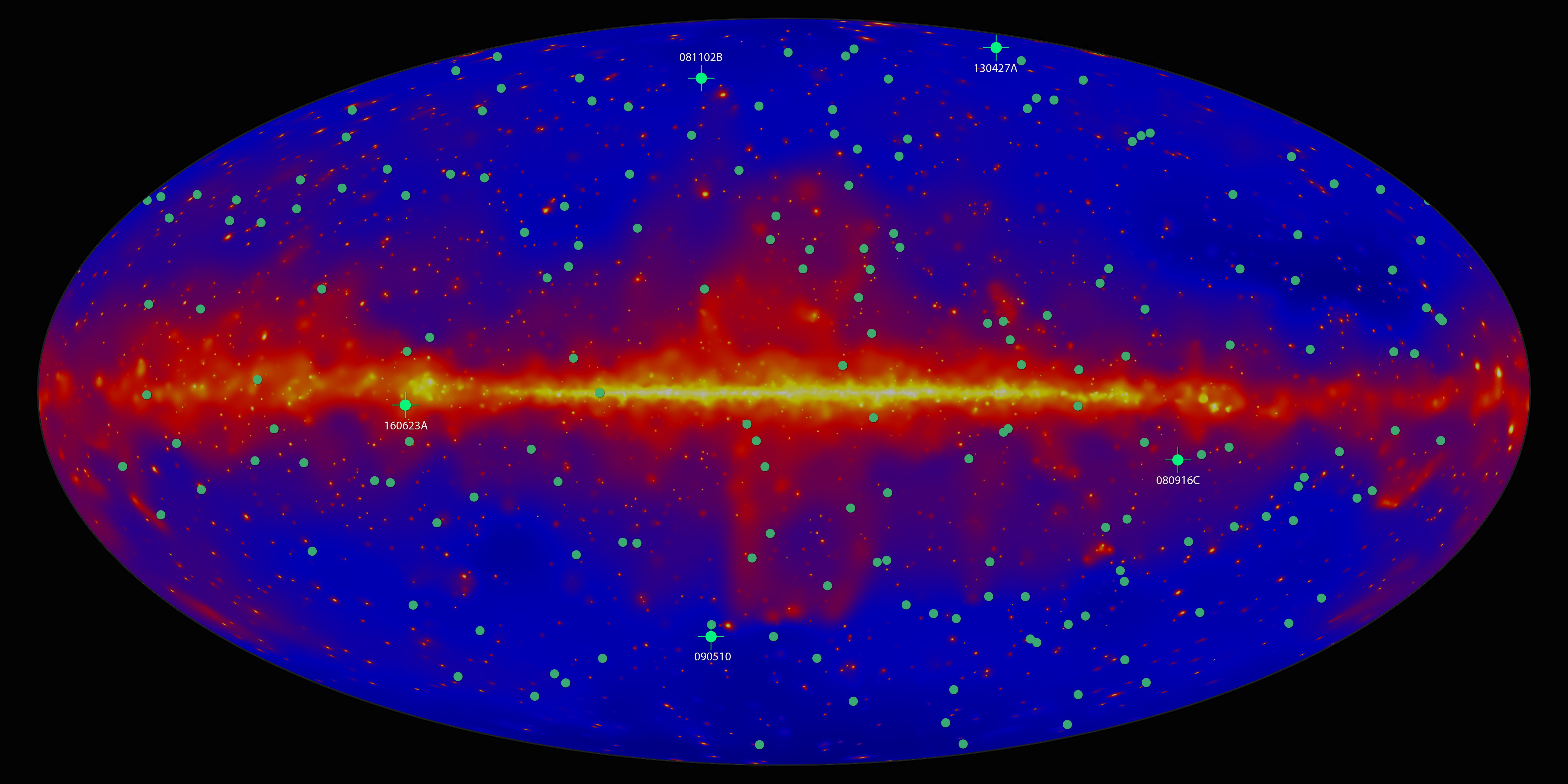Faster-Than-Light Travel Could Explain Mysterious Signals Beaming Through the Cosmos
But don't worry, no laws of physics are being violated.

In a distant corner of the universe, something is traveling faster than light.
No, the laws of physics aren't being violated: It's still true that nothing can travel faster than light in the vacuum of empty space. But when light travels through matter, like interstellar gas or a soup of charged particles, it slow downs, meaning other matter might overtake it. And that may explain the weird symmetry in pulses of some of the most energetic light in the universe, called gamma-ray bursts.
Related: 8 Ways You Can See Einstein’s Theory of Relativity in Real Life
These cryptic bursts — bright flashes of gamma-ray light that come from faraway galaxies — form when massive stars collapse or when ultradense neutron stars collide. These cataclysms send speeding jets of hot, charged plasma zooming through space.
But these signals have an odd symmetry, and the reason they do is still a mystery.
A gamma-ray burst doesn't brighten and dim in one steady peak, but instead in a flickering pattern, said Jon Hakkila, an astrophysicist at the College of Charleston in South Carolina.
Hakkila has worked on this puzzle for years. Now, he and a collaborator have a solution: plasma traveling both slower and faster than the speed of light could explain this flickering pattern, as they report in a paper published Sept. 23 in The Astrophysical Journal. If they're right, it may help us understand what's actually producing these gamma-rays.
Sign up for the Live Science daily newsletter now
Get the world’s most fascinating discoveries delivered straight to your inbox.
"I find it a great step forward," that connects the small scale phenomena in the plasma to our large-scale observations, said Dieter Hartmann, an astrophysicist at Clemson University who was not involved in the study.
In the last few years, Hakkila has found that gamma-ray bursts have small fluctuations in brightness on top of their overall brightening and dimming. If you subtract the overarching brightening and dimming, you're left with a series of smaller peaks — one primary peak with smaller peaks in brightness before and after. And this pattern is strangely symmetric. If you "fold" the pattern over at the main peak and stretch one side, the two sides match remarkably well. In other words, the light pattern of a gamma-ray burst's pulse hints at a set of mirrored events.
"Whatever happened on the front side happened on the back side," Hakkila said. "And the events knew to happen in reverse order."
Though astronomers don't know what causes gamma-ray burst emission at the particle scale, they are fairly sure that it happens when jets of plasma traveling near the speed of light interact with surrounding gases. Hakkila had been trying to come up with explanations for how these situations might make symmetric light pulses when he heard from Robert Nemiroff, an astrophysicist at Michigan Technological University.
Nemiroff was studying what happens when an object travels through a surrounding medium faster than the light it emits, called superluminal motion. In previous research, Nemiroff had found that when such an object goes from traveling slower than light to faster than light, or vice versa, this transition can trigger a phenomenon called relativistic image doubling. Nemiroff wondered whether this could account for the symmetric patterns Hakkila found in gamma-ray burst pulses.
So what exactly is "relativistic image doubling?" Imagine a boat creating ripples as it moves across a lake toward the shore. If the boat travels more slowly than the waves it creates, a person standing on the shore will see the boat's ripples hit the shore in the order that the boat created them. But if the boat travels faster than the waves it creates, the boat will overtake the first wave it creates only to create a new ripple in front of that one and so on. In that way, the new ripples created by the boat will reach the shore sooner than the first waves it created. A person standing on the shore will see the ripples hit the shore in a time-reversed order.
The same idea applies to gamma-ray bursts. If the cause of a gamma-ray burst is traveling faster than the light it emits through the gas and matter surrounding it, we would see the emission pattern in reverse chronological order.
Hakkila and Nemiroff reasoned that this could account for half of a gamma-ray burst's symmetric pulse.
But what if the material was first traveling slower than the speed of light, but then accelerated? What if it started fast and then slowed down? In either case, we might see the emission both in chronological order and reverse chronological order right after one another, making a symmetric pulse pattern like the symmetric peaks observed in gamma-ray bursts.
There are still missing pieces to this puzzle. For one, researchers still don't know what's causing these bursts at the microscopic scale. But this proposed model gives researchers one small clue in the hunt to find the ultimate cause of gamma-ray bursts, Hartmann said.
Originally published on Live Science.









